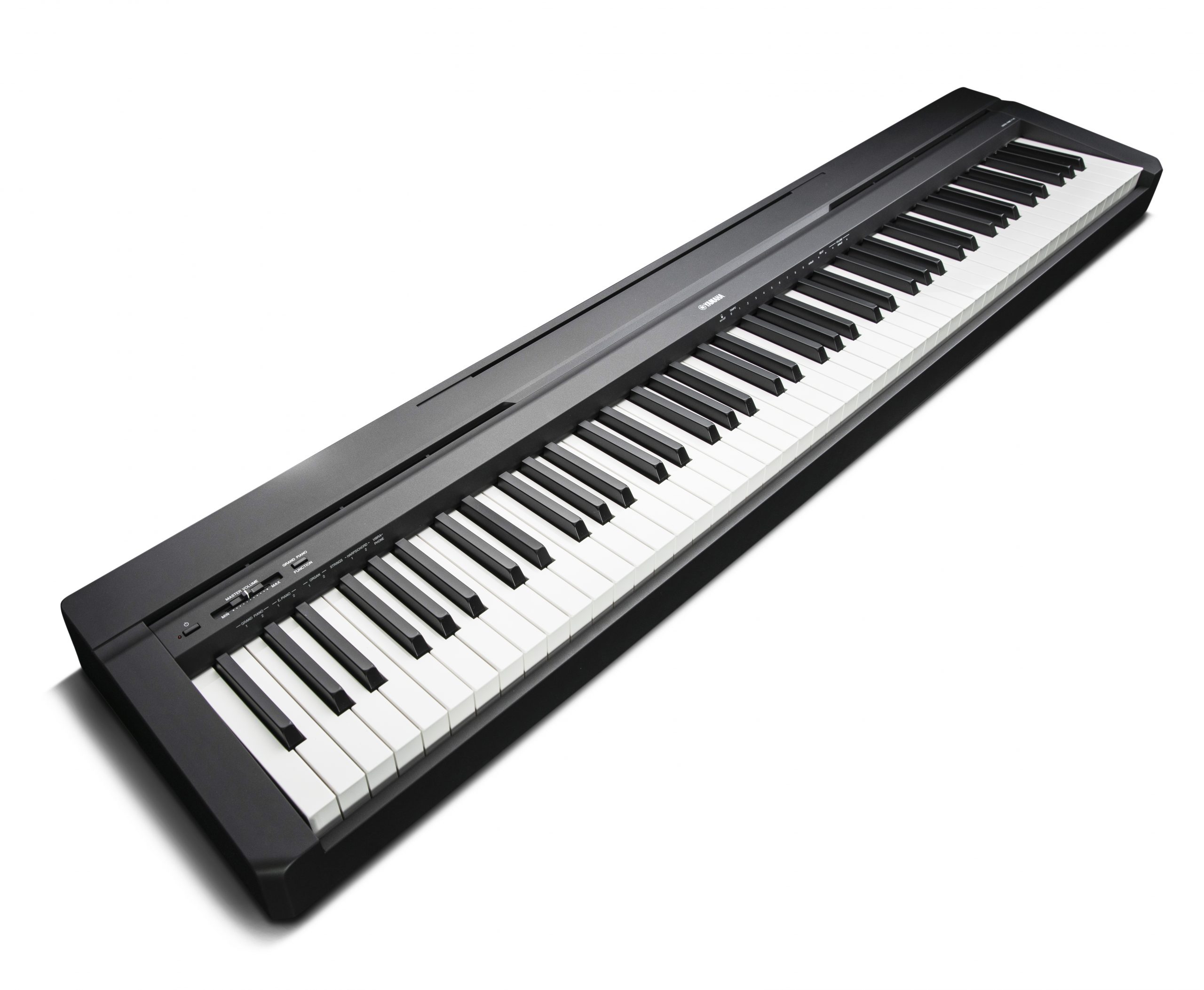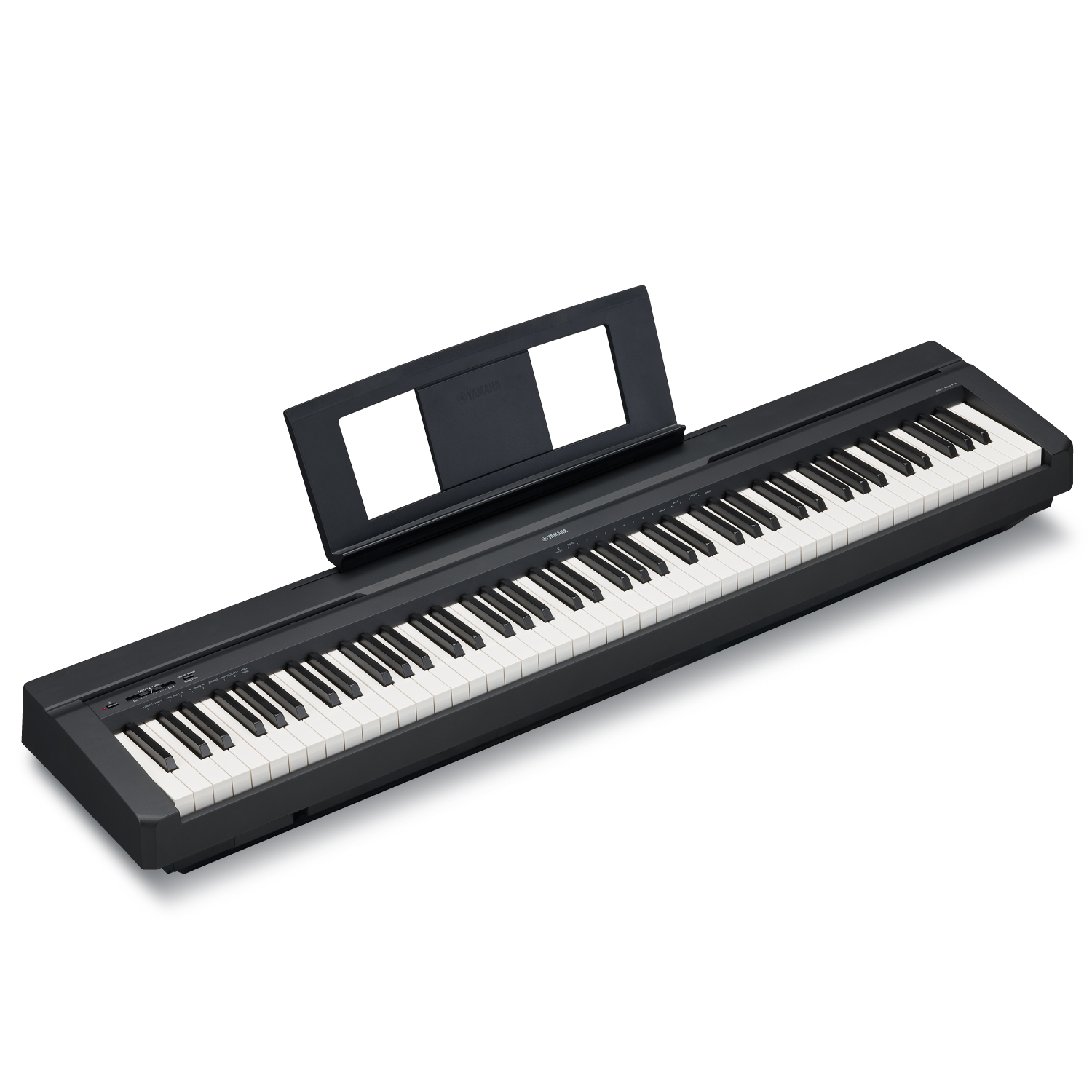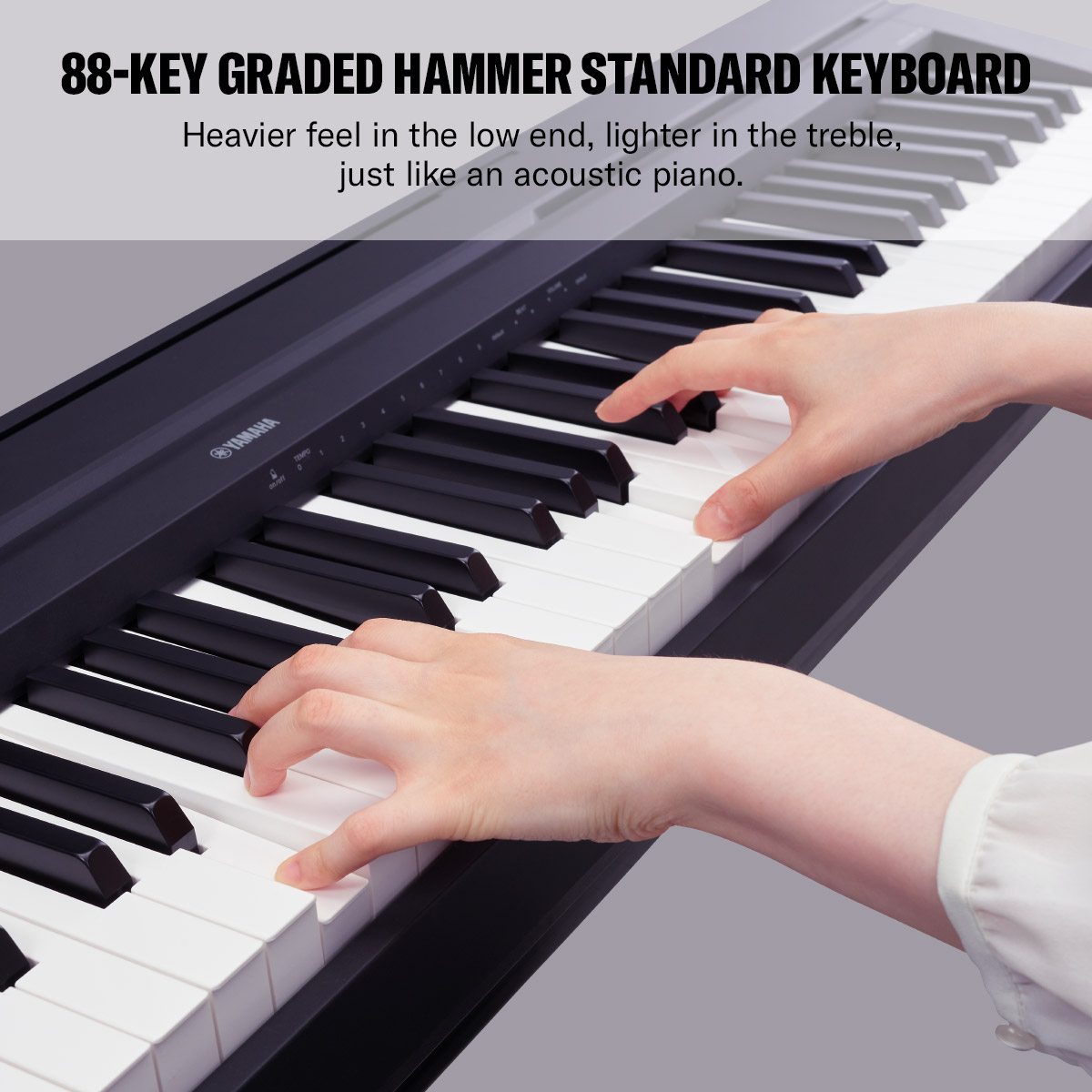Yamaha P-45 Digital Piano
£299.00
3 in stock
Yamaha P-45 Portable Digital Piano
The Yamaha P-45 is very often recommended as one of the best entry-level/affordable digital pianos. Here’s what people generally think is “so great” about it — and also some of its limitations, so you can see whether it’d be a good fit for you.
What’s good about the Yamaha P-45:
Authentic feel with weighted keys (GHS action)
It uses Yamaha’s Graded Hammer Standard (GHS) keyboard action with 88 fully weighted keys. That means the low (bass) keys feel heavier, and the high (treble) keys feel lighter — approximating how an acoustic piano works. For beginners especially, that helps build proper technique.
Sound quality and sampling
Yamaha uses Advanced Wave Memory (AWM) stereo sampling, which means they sample real acoustic pianos and play those samples back. It gives a more realistic piano sound compared to many cheaper keyboards that simulate piano more crudely. Also, it has a “Grand Piano” sound and other voices (10 total) including electric piano, vibraphone, strings, etc.
Decent polyphony for its price (64 notes)
It has 64-note polyphony, meaning up to 64 notes can be sounding at once. That’s enough for most pieces, especially once you use the sustain pedal. For many in its price range, this is acceptable (and in fact better than many cheaper keyboards) so notes are less likely to drop off in more complex passages.
Compact, portable design
Weighing about 11.5 kg and being slim (depth less than 30 cm), it’s fairly easy to move. Good for students, for practice in different rooms, or transporting for lessons.
Simplicity / ease of use
The controls are minimal: you’ve got volume, power, one function button (for changing voices, metronome, etc.), a sustain pedal input, USB-Host, etc. This simplicity is a plus if you don’t want to fiddle with lots of settings.
Price / value
For what you pay, you get a convincing piano feel + sound, which makes it one of the best “bang for buck” options for beginners or for someone wanting a decent digital piano without spending too much.
What’s less good / where people feel it’s limited:
To be fair, there are trade-offs. Some things where the P-45 doesn’t perform as well as those higher up in the range, in this case the P-145
Limited speaker power / projection
The built-in speakers (around 6 W + 6 W) are okay for home use, but in larger rooms / performance settings they can feel underpowered. The sound might be less “full” or lack bass when played loudly.
Fewer features
It lacks many of the bells and whistles that more advanced models have: fewer voices, no weighted pedal unit (just the sustain/damper pedal), limited split/layering, no onboard recording, no line-outs (audio outputs). Some of those features you might miss if you want more versatility.
Key feel not premium
While the GHS action is good for the price, some users say the keys don’t feel as high-end as on pricier models (less nuanced, perhaps less “response” or speed for fast or delicate playing). Also the feel of “plastic” keys can show. For classical or advanced players this may be a limitation.
Lack of modern connectivity features
For example, Bluetooth, USB audio out, multiple pedal inputs, etc., are missing. If you want to connect to external systems, do multi-pedal stuff, or use it as a controller in more complex setups, you might feel constrained.
Who it’s best suited for
Given the strengths and limitations, the P-45 tends to be especially good for:
-
Beginners / students who want something with a real piano feel but on a budget.
-
Someone who needs portability / has limited space.
-
Home practice, small lessons, occasional performance; less so large gig settings.
-
Players who value simplicity over complexity — just want to play without fuss.
Key Specifications:
Width: 1326mm
Height: 154mm
Depth: 295mm
Weight: 11.5kg
Compare the specs of the P Series Range by clicking here
You must be logged in to post a review.








Reviews
There are no reviews yet.